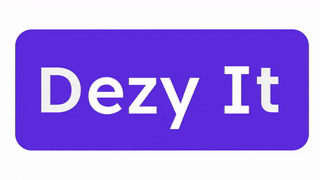Can AI Scribes Cut Physician Workloads in Half? The Latest Data Says Yes
- sia699
- Apr 1
- 3 min read
Updated: Apr 7

The administrative burden on UK physicians has escalated, with documentation demands consuming substantial time and contributing to burnout. AI-powered medical scribes have emerged as a promising solution, aiming to automate clinical note-taking and alleviate these challenges. This article examines the impact of AI scribes on physician workloads within the UK healthcare system, incorporating recent data and technical insights up to 2025.
The Role of AI Scribes in Healthcare
AI medical scribes utilize advanced technologies to transcribe and generate clinical notes during patient consultations. By automating documentation, these tools enable physicians to focus more on patient care and less on administrative tasks.
Recent Developments in the UK
In March 2025, Tandem Health introduced its AI medical scribe in the UK, designed to draft accurate clinical notes during patient interactions. This innovation aims to reduce the documentation burden, allowing doctors to concentrate more on their patients and potentially decreasing errors in medical records.
Additionally, Modality Partnership collaborated with Heidi Health to implement AI medical scribe technology across its practices. This system transcribes clinician-patient conversations into clinical notes and follow-up documents, streamlining administrative tasks and reducing cognitive load on General Practitioners (GPs).
Technical Insights into AI Scribes
AI scribes employ several sophisticated technologies:
Speech Recognition: Converts spoken language into text, enabling real-time transcription of patient consultations.
Natural Language Processing (NLP): Interprets and structures the transcribed text into coherent clinical notes, distinguishing between relevant medical information and extraneous dialogue.
Machine Learning Algorithms: Continuously improve the accuracy and efficiency of transcription by learning from vast datasets of medical conversations.
Impact on Physician Workloads
Early implementations of AI scribes in the UK have shown promising results:
Time Savings: Physicians using AI scribes have reported significant reductions in time spent on documentation. For instance, users of Tandem’s AI scribe have experienced up to 60% time savings, allowing more focus on patient care and reducing overtime.
Reduced Burnout: By alleviating administrative burdens, AI scribes contribute to lowering physician stress levels. A pilot survey at Mass General Brigham indicated a 40% reduction in reported burnout over six weeks among clinicians using AI scribe technology.
Challenges and Considerations
While the benefits are notable, several challenges must be addressed:
Data Security and Privacy: Ensuring patient information remains confidential is paramount. AI scribe systems must comply with data protection regulations and implement robust security measures.
Accuracy and Reliability: AI-generated notes require thorough review by clinicians to prevent errors. Instances of "hallucinations," where AI produces incorrect information, have been reported, underscoring the need for vigilant oversight.
Integration with Existing Systems: Seamless incorporation of AI scribes into current Electronic Health Records (EHR) systems is essential to avoid workflow disruptions.
Future Prospects
The trajectory for AI scribes in UK healthcare appears promising:
Wider Adoption: As technology advances and demonstrates value, more healthcare providers are likely to implement AI scribe solutions.
Enhanced Capabilities: Future iterations may offer improved accuracy, multilingual support, and additional functionalities such as summarizing clinical evidence and drafting referral letters.
Policy Development: Establishing comprehensive guidelines for the ethical and effective use of AI in clinical settings will be crucial to maximize benefits and mitigate risks.
Conclusion
AI medical scribes present a viable solution to the growing administrative challenges faced by UK physicians. By automating documentation, they have the potential to significantly reduce workloads, enhance patient interactions, and improve overall healthcare delivery. Continued research, careful implementation, and adherence to ethical standards will be key to fully realizing the advantages of this emerging technology.
Learn More:

